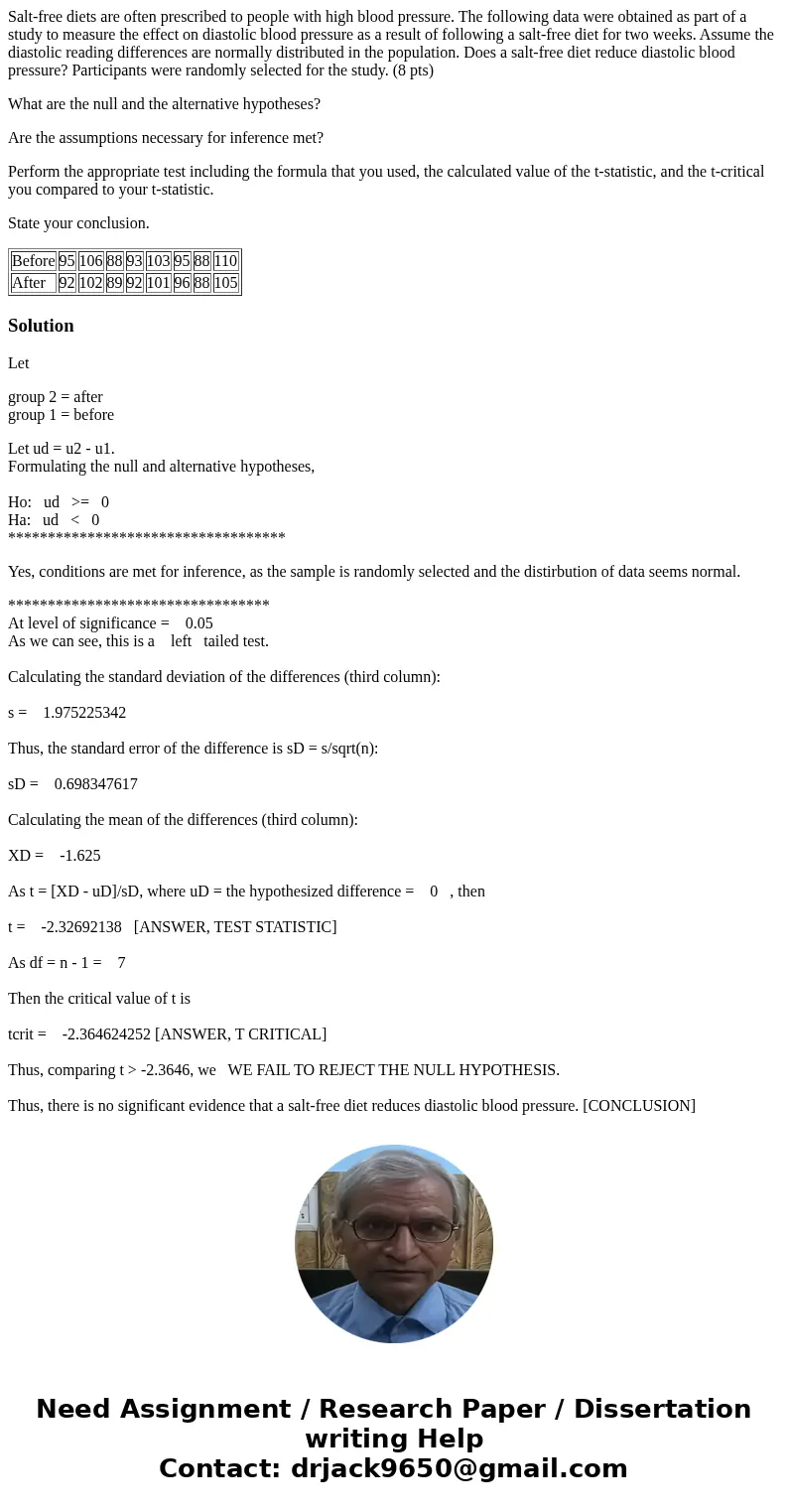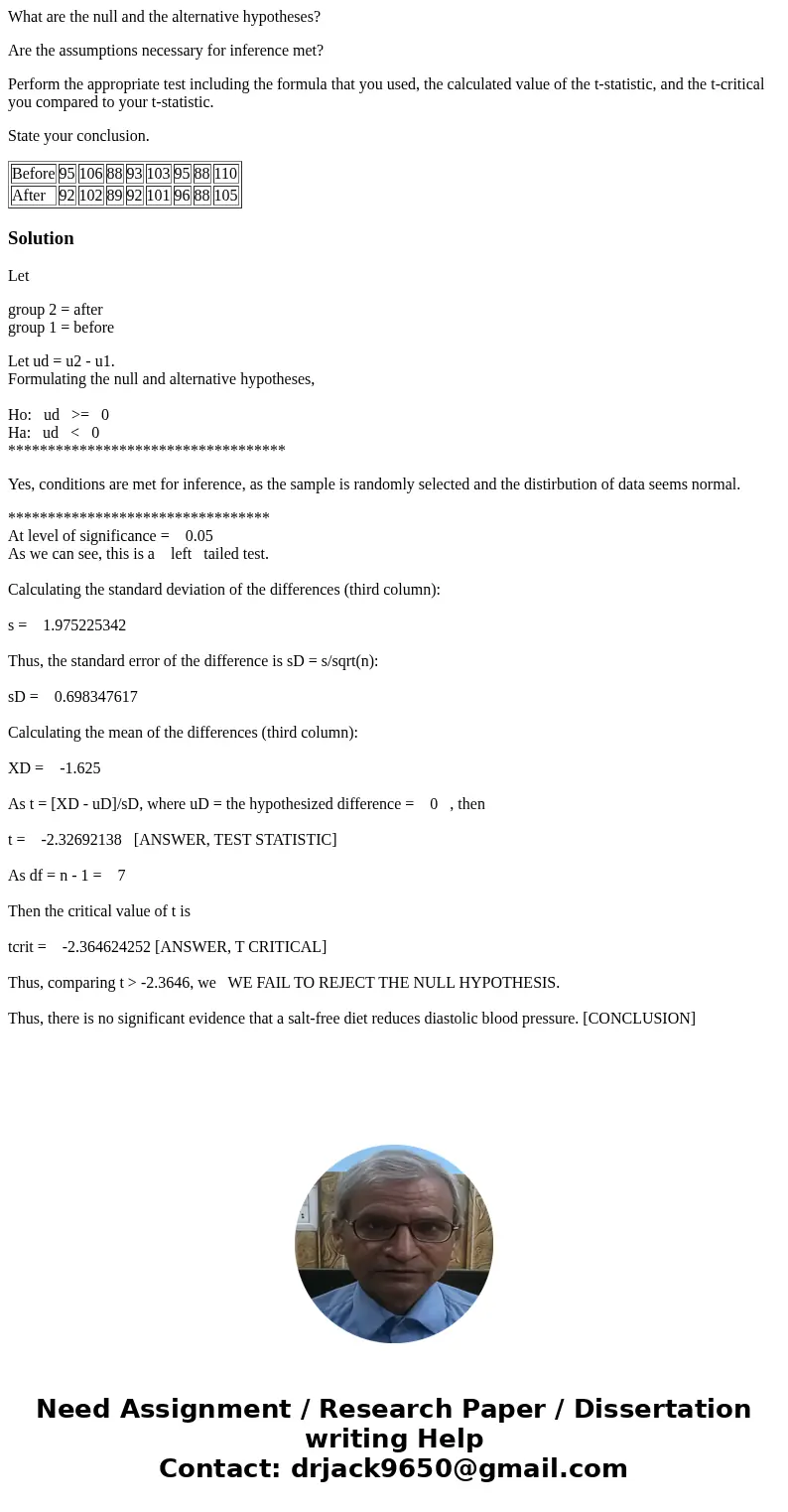Saltfree diets are often prescribed to people with high bloo
Salt-free diets are often prescribed to people with high blood pressure. The following data were obtained as part of a study to measure the effect on diastolic blood pressure as a result of following a salt-free diet for two weeks. Assume the diastolic reading differences are normally distributed in the population. Does a salt-free diet reduce diastolic blood pressure? Participants were randomly selected for the study. (8 pts)
What are the null and the alternative hypotheses?
Are the assumptions necessary for inference met?
Perform the appropriate test including the formula that you used, the calculated value of the t-statistic, and the t-critical you compared to your t-statistic.
State your conclusion.
| Before | 95 | 106 | 88 | 93 | 103 | 95 | 88 | 110 |
| After | 92 | 102 | 89 | 92 | 101 | 96 | 88 | 105 |
Solution
Let
group 2 = after
group 1 = before
Let ud = u2 - u1.
Formulating the null and alternative hypotheses,
Ho: ud >= 0
Ha: ud < 0
***********************************
Yes, conditions are met for inference, as the sample is randomly selected and the distirbution of data seems normal.
*********************************
At level of significance = 0.05
As we can see, this is a left tailed test.
Calculating the standard deviation of the differences (third column):
s = 1.975225342
Thus, the standard error of the difference is sD = s/sqrt(n):
sD = 0.698347617
Calculating the mean of the differences (third column):
XD = -1.625
As t = [XD - uD]/sD, where uD = the hypothesized difference = 0 , then
t = -2.32692138 [ANSWER, TEST STATISTIC]
As df = n - 1 = 7
Then the critical value of t is
tcrit = -2.364624252 [ANSWER, T CRITICAL]
Thus, comparing t > -2.3646, we WE FAIL TO REJECT THE NULL HYPOTHESIS.
Thus, there is no significant evidence that a salt-free diet reduces diastolic blood pressure. [CONCLUSION]


 Homework Sourse
Homework Sourse